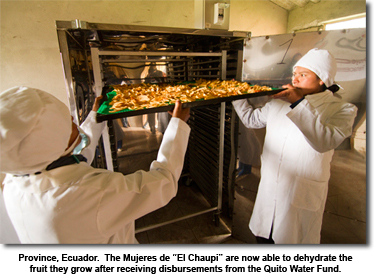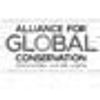
With more than half the world's population facing water shortages within 25 years, innovative ways to conserve water are key to supporting conservation and the livelihoods of local people.
To explore this issue the Alliance for Global Conservation interviewed Andrew Deutz, director of international relations at The Nature Conservancy, about water funds and the link between freshwater conservation, poverty and new local business alternatives.
Water, Poverty and New Local Business Alternatives -- A Discussion With Andrew Deutz
How does freshwater conservation fight poverty?
Deutz: It doesn't directly; not without other efforts. But as Carl Sagan said, "Anything else you're interested in is not going to happen if you can't breathe the air and drink the water."
The world's rural poor are more likely to depend on lakes and rivers for their drinking water, as opposed to groundwater sources, which require wells or other hardware to access. Millions of poor people around the world depend on freshwater fish as their main source of protein. The seasonal ebbs and flows of rivers keep floodplains rich for farming in places where irrigation infrastructure and fertilizer are out of reach. I could go on.
In fact, according to a recent UN report, the poorest of the poor in India for example -- people living on less than $2 per day -- get more than half of their income from the benefits that nature provides.

Doesn't this mean that conservation can run counter to the needs of the poor?
Deutz: It means that conservation helps the poor secure their existing asset base -- natural resources.
And it means that we can't reach our conservation goals without addressing poverty.
In South Asia, nearly one out of every two children under five is malnourished. In Africa, it's about one out of four. Global population is projected to go from 6.5 billion today to 9 billion 2050, and more than half of the world's population will face water scarcity within 25 years. Agriculture is the biggest user of freshwater. So we have to help the world figure out how to produce more food for more people even though many places will have less water.
At the same time, energy needs are spurring more hydropower dams on rivers. A study co-authored by the Conservancy's Brian Richter has revealed that large dams have had a negative impact on about half a billion poor people downstream of those dams, from loss of fish, loss of farmable land and other repercussions.
The world may well need those dams -- they don't burn global-warming-producing fossil fuels, and they can increase water storage for agriculture to feed a hungry world. The question is: Can we make smarter choices about how we dam rivers, grow food and use drinking water? I think we have to. And I think we can.
So can you give us some examples of projects that connect freshwater conservation and poverty?
Andrew Deutz: Let's look at our Water Funds in Latin America, for instance. Quito, Ecuador is flanked by three vast protected areas. Many poor people live in the parks and they clear forests or degrade grasslands as they try to make a living farming or raising cattle. That not only damages habitat for species like Andean condors, it damages rivers that provide drinking water for people in Quito.
But we can't simply tell poor people to stop what they're doing. We have to offer them genuine, better alternatives.
More than a decade ago, Conservancy staff figured out a way to do that. "Water Funds" gather voluntary investments from water users downstream -- governments and businesses -- and then give financial support to people living upstream in exchange for protecting nature.
For example, the Quito Water Fund helps local people -- mainly women thus far -- start new businesses of their own choosing by providing small grants and supplies, such as sewing machines to make clothing to sell or an industrial oven for making dried medicinal herbs and fruit for local markets. These women previously never had the start-up funding they needed.
The new oven means more income for these women, less pressure on wildlife habitat and better water in Quito. It is the manifestation of putting an economic value on freshwater conservation, and rewarding those who support it. This is what conservation has to look like today in order to work and to last. Water Funds are a great example of how we're getting it right. We just need to do a lot more like this.

Become a fan of Alliance for Global Conservation on Facebook:
www.facebook.com/Allianceforglobalconservation
